[最も欲しかった] p(x)=3x+1 x=-1/3 108461-P(x)=3x^(2)-1 x=-(1)/(sqrt(3)) (2)/(sqrt(3))
In mathematics, a multiplicative inverse or reciprocal for a number x, denoted by 1/x or x −1, is a number which when multiplied by x yields the multiplicative identity, 1The multiplicative inverse of a fraction a/b is b/aFor the multiplicative inverse of a real number, divide 1 by the number For example, the reciprocal of 5 is one fifth (1/5 or 02), and the reciprocal of 025 is 1(i) p(x) = 3x 1, x = – 1/3 Given p(x) = 3x 1 Putting x = – 1/3 p((−1)/3) = 3 ((−1)/3) 1 = 1 1 = 0 Since p((−1)/3) is equal to 0 Therefore, x = (−1)/3 is a zero of the given polynomialRespuesta 2x37x24x9 Explicación paso a paso P(x)= 0 4x2 3x 5 Q(x)= 2x3 0 7x 1 S(x)= 0 3x2 6x 3

Class 9 Polynomial 2 Coordinate Geometry Linear Equation In Two Variables Euclid S Geometry Lines And Angles Notes
P(x)=3x^(2)-1 x=-(1)/(sqrt(3)) (2)/(sqrt(3))
P(x)=3x^(2)-1 x=-(1)/(sqrt(3)) (2)/(sqrt(3))-Consider the argument 3x(P(x) AQ(x)) 7nr 12 198% Consider the argument 3x(P(x) ^ Q(x)) ExM(x) 3x(M(2) A Q(x)) (a) Find the flaw in the following derivation (1) 3x(PCompute answers using Wolfram's breakthrough technology & knowledgebase, relied on by millions of students & professionals For math, science, nutrition, history, geography, engineering, mathematics, linguistics, sports, finance, music WolframAlpha brings expertlevel knowledge and
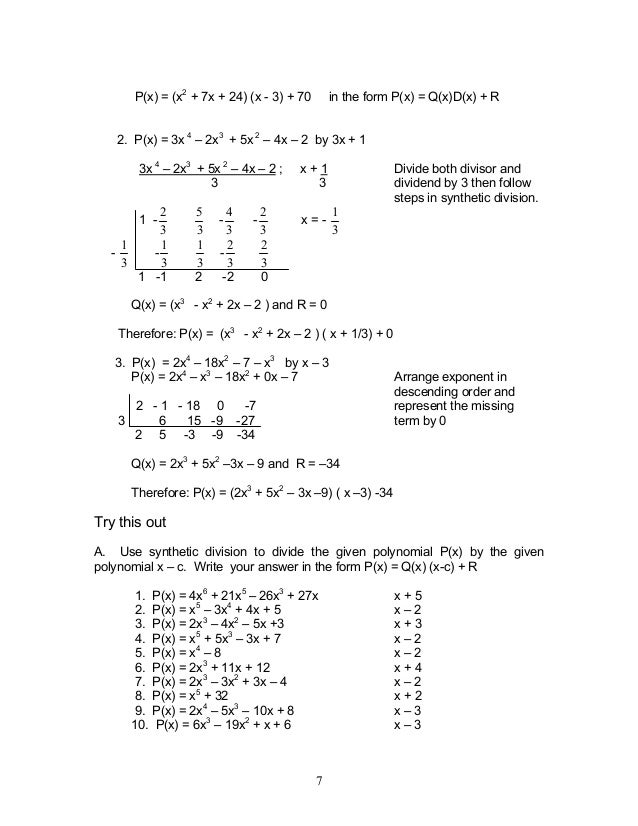


Module 1 Polynomial Functions
Polynomial Division Questions 1 If the polynomial x 4 – 6x 3 16x 2 – 25x 10 is divided by another polynomial x 2 – 2x k, the remainder comes out to be x a, find k and a 2 Divide the polynomial 2t 4 3t 3 – 2t 2 – 9t – 12 by t 2 – 3 Find all the zeroes of 2x 4 – 3x 3 – 3x 2 6x – 2, if two of its zeroes are √2\sqrt{x1}x=7 \left3x1\right=4 \log _2(x1)=\log _3(27) 3^x=9^{x5} equationcalculator 5x3=3x1 en Related Symbolab blog posts High School Math Solutions – Quadratic Equations Calculator, Part 1 A quadratic equation is a second degree polynomial having the general form ax^2 bx c = 0, where a, b, and cSolve \displaystyle{y}={16}{x}^{{2}}{24}{x}{5} Answers 1/4 and 5/4 Explanation To find yintercept, make x = 0 > y = 5 To find xintercepts, solve
Simplify (1/(3x)1/3)/x Simplify the numerator Tap for more steps To write as a fraction with a common denominator, multiply by To write as a fraction with a common denominator, multiply by Write each expression with a common denominator of , by multiplying each by an appropriate factor ofThen type x=6 Try it now 2x3=15 @ x=6 Clickable Demo Try entering 2x3=15 @ x=6 into the text box After you enter the expression, Algebra Calculator will plug x=6 in for the equation 2x3=15 2(6)3 = 15 The calculator prints "True" to let you know that the answer is right More ExamplesX1 − 3x2 − 2x3 x4 = −4, −2x1 7x2 x3 − 2x4 = −2, 3x1 − 7x2 − 3x3 3x4 = −5 ,5x1 x2 4x3 − 2x4 =
Click here👆to get an answer to your question ️ Find the remainder when x^3 3x^2 3x 1 is divided by X 1\frac{\left(4x^{5}1\right)\left(3x^{31}3x^{11}\right)\left(x^{3}3x^{1}\right)\times 5\times 4x^{51}}{\left(4x^{5}1\right)^{2}} The derivative of a polynomial is the sum of the derivatives of its terms The derivative of a constant term is 0 The derivative of ax^{n} is nax^{n1}Solution for 3x1=8 equation 3x 1 = 8 3x = 8 1 3x = 9 (divide both sides by 3 to get x) 3x/3 = 9/3 x = 3 You can always share this solution See similar equations



If 1 Is Zero Of The Polynomial P X Ax2 3 A 1 X 1 Then The Value Of A Is Brainly In



Intro To Combining Functions Article Khan Academy
Counting repeated roots, it will, of course, be 3To find out how many roots are repeated roots If p (x) has repeated roots, they are also roots of p ′ (x) of one less degree So compute the GCDX^33x^23x1 "note that" (xa)^3=x^3(aaa)x^2(aaaaaa)xa^3 (x1)^3toa=1 rArr(x1)^3=x^3(111)x^2(111)x(1)^3 =x^33x^23x1Set the factor '(1 3x)' equal to zero and attempt to solve Simplifying 1 3x = 0 Solving 1 3x = 0 Move all terms containing x to the left, all other terms to the right Add '1' to each side of the equation 1 1 3x = 0 1 Combine like terms 1 1 = 0 0 3x = 0 1 3x = 0 1 Combine like terms 0 1 = 1 3x = 1



Verify Whether The Following Are Zeroes Of The Polynomial Indicated Against The


Www Math Utah Edu Wortman 1050 Text If Pdf
Solution for 3x1=8 equation 3x 1 = 8 3x = 8 1 3x = 9 (divide both sides by 3 to get x) 3x/3 = 9/3 x = 3 You can always share this solution See similar equationsSimple and best practice solution for (3x6)(x1)= equation Check how easy it is, and learn it for the future Our solution is simple, and easy to understand, so don`t hesitate to use it as a solution of your homeworkSimplify x(3x1) Simplify by multiplying through Tap for more steps Apply the distributive property Reorder Tap for more steps Rewrite using the commutative property of multiplication Move to the left of Simplify each term Tap for more steps Multiply by by adding the exponents Tap for more steps
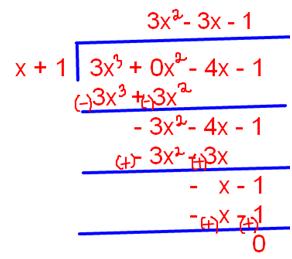


Free Math Answers Answers Within 24 Hours Step By Step Explanations


Find P 1 If P X 3x 2x X 4 Quora
Free math problem solver answers your algebra, geometry, trigonometry, calculus, and statistics homework questions with stepbystep explanations, just like a math tutor\sqrt{x1}x=7 \left3x1\right=4 \log _2(x1)=\log _3(27) 3^x=9^{x5} equationcalculator 5x3=3x1 en Related Symbolab blog posts High School Math Solutions – Quadratic Equations Calculator, Part 1 A quadratic equation is a second degree polynomial having the general form ax^2 bx c = 0, where a, b, and cIf p(x)=0, then that given value is zero of polynomial p(x) (i) p(x)=3x1 Put x=− 3 1, we get p(x)=3(− 3 1)1=−11=0 So, x=− 3 1 is the zero of the polynomial p(x) (ii) p(x)=5x−π Put x= 5 4, we get p(x)=5( 5 4)−π=4−π =0 So, x= 5 4 is not the zero of the polynomial p(x) (iii) p(x)=x 2 −1 Put x=1, we get p(x)=(1) 2 −1=1−1=0


Verify That 5 2 And 1 3 Are The Zeroes Of The Cubic Polynomial P X 3x 3 10x 2 27x 10 Sarthaks Econnect Largest Online Education Community



Solved 1 Find The Quotient And Remainder By Using Long D Chegg Com
Example 7 (Long division) Divide the polynomial 3x4 – 4x3 – 3x – 1 by x – 1 By long division Example 7 (Remainder theorem) Divide the polynomial 3x4 – 4x2 – 3x – 1 by x – 1 Dividing 3x4 – 4x2 – 3x – 1 by x – 1Keeping in the spirit of (1) we denote a geometric p rv by X ∼ geom(p) Note in passing that P(X > k) = (1−p)k, k ≥ 0 Remark 13 As a variation on the geometric, if we change X to denote the number of failures before the first success, and denote this by Y, then (since the first flip might beAdd 16 to both sides of the equation 3x = 16 Multiply both sides of the equation by (1) 3x = 16 Divide both sides of the equation by 3 x = 16/3 = 5333



P X 3x 1 X 1 3 Verify Whether The Following Are Zeroes Of The Polynomial Brainly In


2
18 y = 2 In x 3x – 1 y x3 1 2 In x 22 y = Vin x – 31 z boitime on 24 y = (In 4)(In 3x) 26 y = e2x' ln(2x 1) In y 28 p(y) ps Get more help from Chegg Solve it with our calculus problem solver and calculatorGet stepbystep answers and hints for your math homework problems Learn the basics, check your work, gain insight on different ways to solve problems For chemistry, calculus, algebra, trigonometry, equation solving, basic math and moreIn mathematics, a multiplicative inverse or reciprocal for a number x, denoted by 1/x or x −1, is a number which when multiplied by x yields the multiplicative identity, 1The multiplicative inverse of a fraction a/b is b/aFor the multiplicative inverse of a real number, divide 1 by the number For example, the reciprocal of 5 is one fifth (1/5 or 02), and the reciprocal of 025 is 1



P X 3x 1 X 1 3 Verify Zeroes Of Polynomial Show Method Also Brainly In


What Is The Sum Of 1 2x 3x 2 Nx N 1 Quora
Get stepbystep answers and hints for your math homework problems Learn the basics, check your work, gain insight on different ways to solve problems For chemistry, calculus, algebra, trigonometry, equation solving, basic math and moreTiger Algebra Solver x^54x^3x^23x1/x^33x1 Free Solver Simplifier that shows steps Helps you solve your homework assignments"X^33x^23x1 "note that" (xa)^3=x^3(aaa)x^2(aaaaaa)xa^3 (x1)^3toa=1 rArr(x1)^3=x^3(111)x^2(111)x(1)^3 =x^33x^23x1



Ex 2 2 3 Verify Whether Following Are Zeroes Of The Ex 2 2


Pradeepchandrasekar Weebly Com Uploads 4 7 8 2 Unit 1 03 Pdf
Polynomial Division Questions 1 If the polynomial x 4 – 6x 3 16x 2 – 25x 10 is divided by another polynomial x 2 – 2x k, the remainder comes out to be x a, find k and a 2 Divide the polynomial 2t 4 3t 3 – 2t 2 – 9t – 12 by t 2 – 3 Find all the zeroes of 2x 4 – 3x 3 – 3x 2 6x – 2, if two of its zeroes are √2If p(x)=0, then that given value is zero of polynomial p(x) (i) p(x)=3x1 Put x=− 3 1, we get p(x)=3(− 3 1)1=−11=0 So, x=− 3 1 is the zero of the polynomial p(x) (ii) p(x)=5x−π Put x= 5 4, we get p(x)=5( 5 4)−π=4−π =0 So, x= 5 4 is not the zero of the polynomial p(x) (iii) p(x)=x 2 −1 Put x=1, we get p(x)=(1) 2 −1=1−1=0Divide Using Synthetic Division (x^33x^2x3)÷(x1) Place the numbers representing the divisor and the dividend into a division like configuration The first number in the dividend is put into the first position of the result area (below the horizontal line )


Mrryman Weebly Com Uploads 3 0 5 6 Pc Midterm Miscellaneous Review Pdf
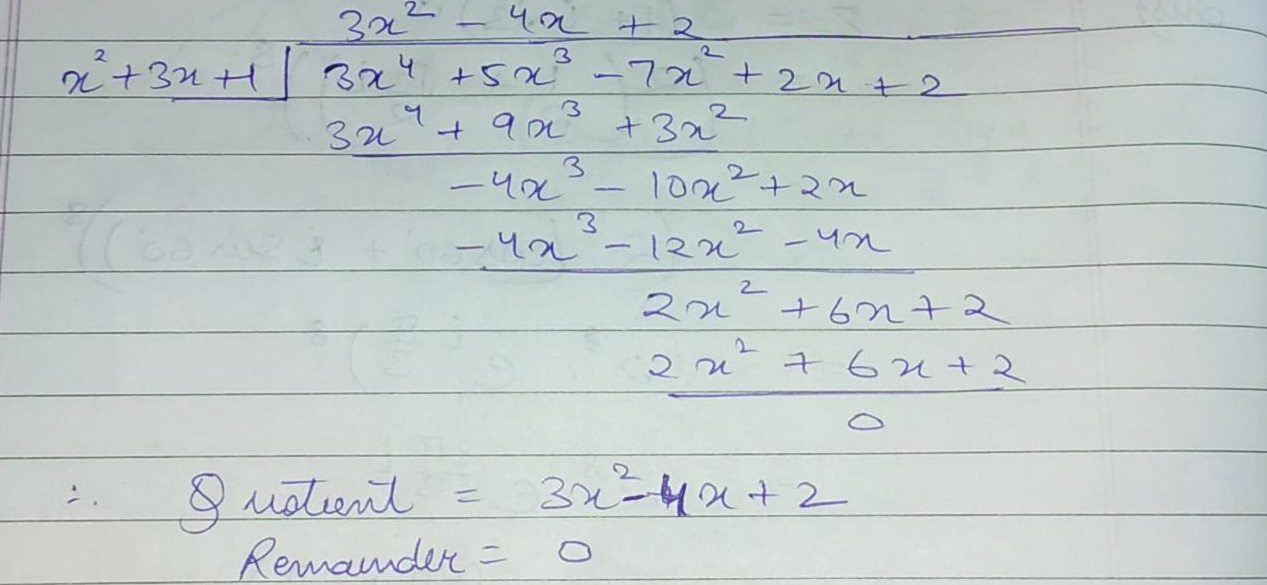


Divide P X 3x 4 5x 3 7x 2 2x 2 By G X X 2 3x 1 And Find The Quotient And Remainder
Y=3x1 Geometric figure Straight Line Slope = 6000/00 = 3000 xintercept = 1/3 = yintercept = 1/1 = Rearrange Rearrange the equation by subtracting what isBy long division Example 7 (Remainder theorem) Divide the polynomial 3x4 – 4x2 – 3x – 1 by x – 1 Dividing 3x4 – 4x2 – 3x – 1 by x – 1 Step 1 Put Divisor = 0 x – 1 = 0 x = 1 Step 2 Let p (x) = 3x4 – 4x2 – 3x – 1 Putting x = 1 p (1) = 3 (1)4 4 (1)2 – 3 (1) – 1 = 3 (1) – 4 (1) – 3 – 1 = 3 – 4 – 3 – 1 = –5 Thus, remainder = p (1) = –5Solve for x 3x1=2 Remove the absolute value term This creates a on the right side of the equation because Set up the positive portion of the solution Solve the first equation for Tap for more steps Move all terms not containing to the right side of the equation Tap for more steps



Check Whether P X X2 3x 1 Is A Factor Of G X 3x4 5x3 7x2 2x 2 By Using Division Algorithm Math Polynomials Meritnation Com



Verify Whether The Following Is Zeroes Of The Polynomial Indicated Against P X 3x 1 X 1 3 2 3 Brainly In
(i) p(x) = 3x 1, x = – 1/3 Given p(x) = 3x 1 Putting x = – 1/3 p((−1)/3) = 3 ((−1)/3) 1 = 1 1 = 0 Since p((−1)/3) is equal to 0 Therefore, x = (−1)/3 is a zero of the given polynomialCalculus Q&A Library Graph f(x) = 3x and g(x) = 3x 1 in the same rectangular coordinate system Use transformations of the graph of f to obtain the graph of g Graph and give equations of all asymptotes Use the graphs to determine the function's domain and rangeSolve by Factoring 3x3(x1)=3 Move to the left side of the equation by subtracting it from both sides Simplify Tap for more steps Simplify each term Tap for more steps Apply the distributive property Multiply by Simplify by adding terms Tap for more steps Subtract from



Class 9 Polynomial 2 Coordinate Geometry Linear Equation In Two Variables Euclid S Geometry Lines And Angles Notes


Check Whether X2 3x 1 Is A Factor Of 3x4 5x3 7x2 2x 2 Mathematics Topperlearning Com Cj90z54ee
Lim_(xrarroo)(13x)^(1/x) = 1 Going to use a nifty wee trick that makes use of the fact that the exponential and natural log functions are inverse operations This means we can apply both of them without changing the function lim_(xrarroo)(13x)^(1/x) = lim_(xrarroo)e^(ln(13x)^(1/x)) Using the exponent rule of logs we can bring the power downTiger Algebra Solver x^54x^3x^23x1/x^33x1 Free Solver Simplifier that shows steps Helps you solve your homework assignments"X1/x =3 square both the sides x²1/x² 2 ×x× 1/x =3² x²1/x² 2=9 x²1/x² =7 Now to find value of x³1/x³ first expand it x³1/x³ = (x1/x) (x²1/x² 1) =(3)(7–1) =3×6 x³1/x³ =18



Ex 2 2 3 Verify Whether Following Are Zeroes Of The Ex 2 2
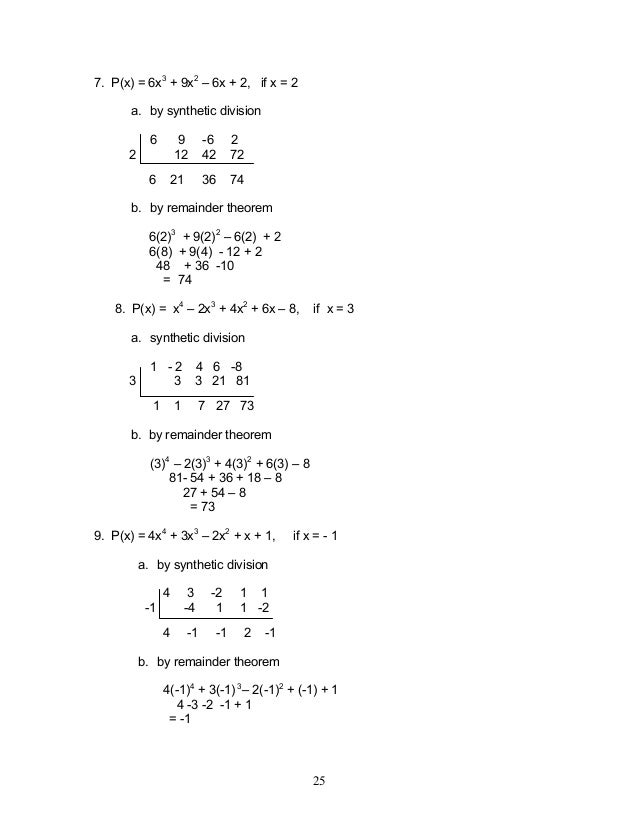


Module 1 Polynomial Functions
Compute answers using Wolfram's breakthrough technology & knowledgebase, relied on by millions of students & professionals For math, science, nutrition, historyFactor x^33x^23x1 Factor using the rational roots test Tap for more steps If a polynomial function has integer coefficients, then every rational zero will have the form where is a factor of the constant and is a factor of the leading coefficient Find every combination ofSet the factor '(1 3x)' equal to zero and attempt to solve Simplifying 1 3x = 0 Solving 1 3x = 0 Move all terms containing x to the left, all other terms to the right Add '1' to each side of the equation 1 1 3x = 0 1 Combine like terms 1 1 = 0 0 3x = 0 1 3x = 0 1 Combine like terms 0 1 = 1 3x = 1



Verify Whether The Following Are Zeroes Of The Polynomial Indica



Solving Rational Equations
With 3 changes, this means that P(x) has 3 or 1 positive real zeros The pattern of the signs of the coefficients of P(x) is With no changes, this means that P(x) has no negative real zerosGraph g(x)=3x1 Rewrite the function as an equation Use the slopeintercept form to find the slope and yintercept Tap for more steps The slopeintercept form is , where is the slope and is the yintercept Find the values of and using the form The slope of the line is the value of , and the yintercept is the value of



Solutions Manual For Calculus For Business Economics And The Social A
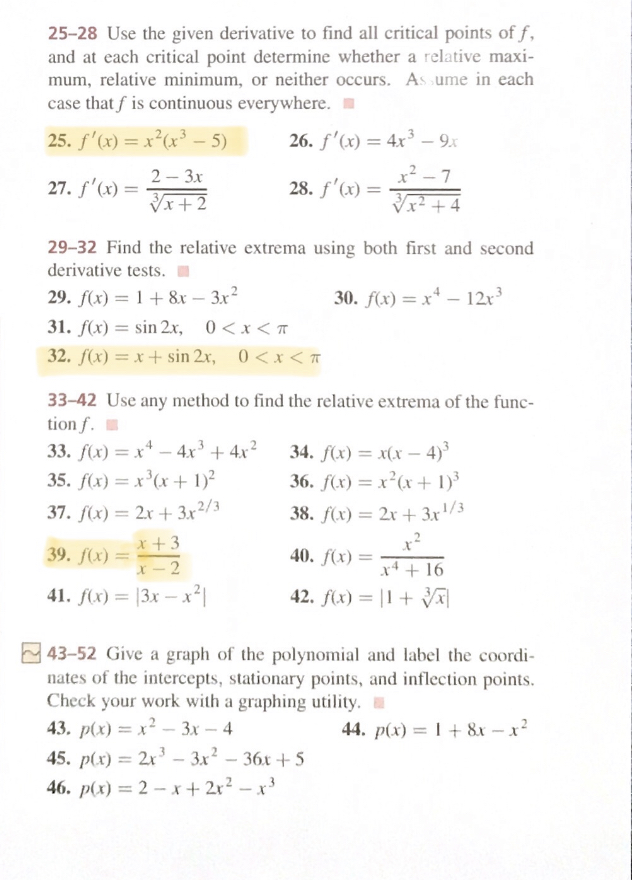


Answered 25 28 Use The Given Derivative To Find Bartleby



Ex 2 2 3 Verify Whether Following Are Zeroes Of The Ex 2 2


Q Tbn And9gcrgv2jrkuiac5il8ahm0b O6pmsoo9cmtg8bpl6ob8 Usqp Cau


Http Www Abss K12 Nc Us Cms Lib02 Nc Centricity Domain 54 Doc Pdf



1 Find The Value Of 64 1 2 X 125 1 3 2 If P X 2x 3 5x 2 3x 2 Is Divided By X Youtube


3 Verify Whether The Followin See How To Solve It At Qanda


Math Scene Equations Iii Lesson 3 Quadratic Equations


How Do We Solve F X 1 3x 5 Evaluate F 2 And F 2x Quora


Www Matsuk12 Us Cms Lib Ak Centricity Domain 2640 Quiz 3 1 3 3 solutions Pdf



Polynomial 1 Class 9 Notes



What Is The Mean Of F X 3x 2 Where X Is A Random Variable With Probability Distribution X X 1 2 3 4 P X X 1 6 1 3 1 3 1 6


Www3 Nd Edu Craicu 1bspring10 Quiz1b Q10 Pdf
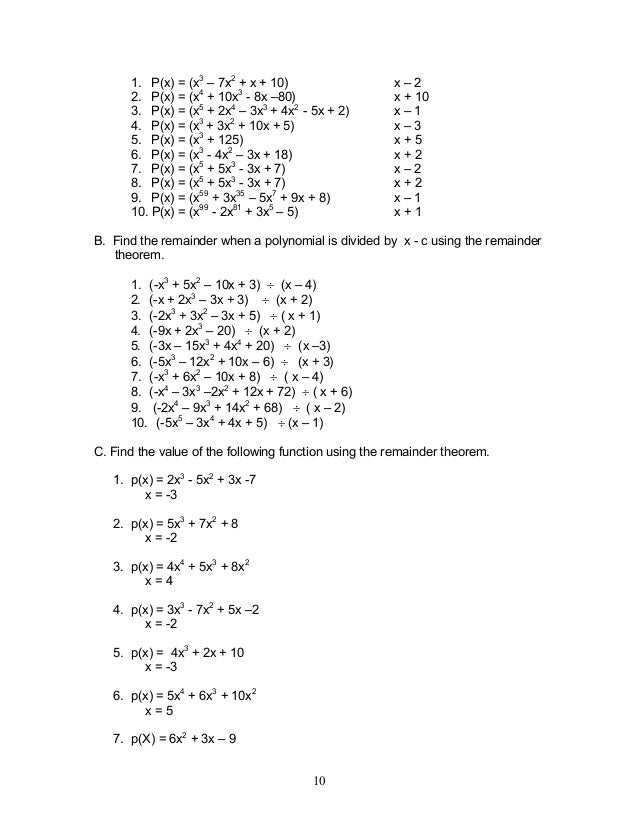


Module 1 Polynomial Functions



Find Remainder Of Polynomial When Divided By X 2 3x 2 Remainder Theorem Application Youtube


Ehsgiftedacademy Weebly Com Uploads 1 4 0 2 16 Honors Precalculus Summer Packet Answer Key 3 0 Pdf



Check Whether G X X 2 3x 1 Is A Factor Of The Polynomial P X 3x 4 5x 2 7x 2 2x 2 By Dividing P X By G X


By Remainder Theorem Find The Remainder When P X Is Divided By G X Studyrankersonline
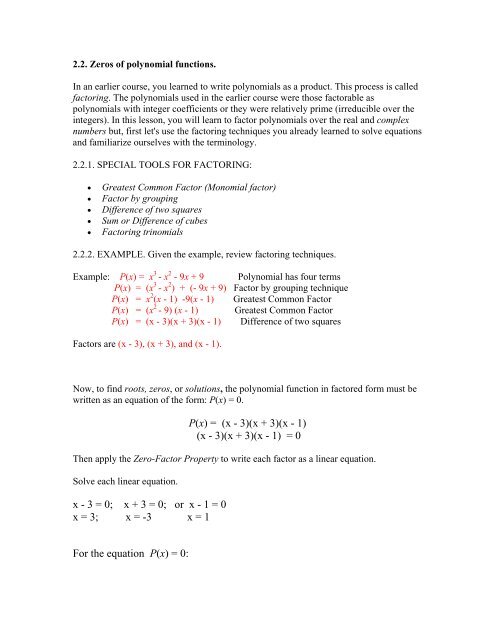


X 1 X 3 X 3 Tutor Homework Com



Verify Whether The Following Are Zeros Of The Polynomial Indicated Against Them Q 3 I Ii Youtube



S565 And S 2 12 B Sx X1x A Function F Is Given By F7 11x 3x3 10x Evaluate F 4 Course Hero
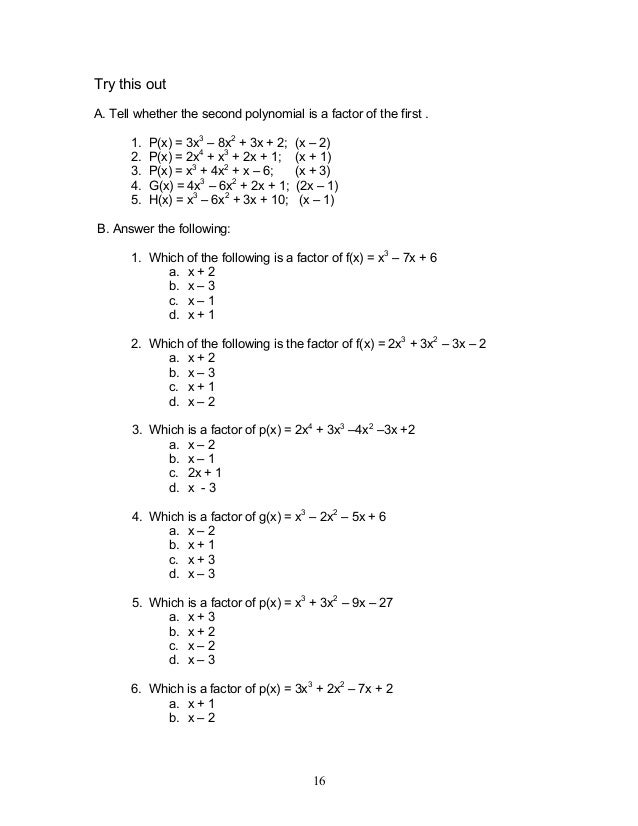


Module 1 Polynomial Functions



Polynomial Functions



Ex 2 3 1 Find The Remainder When X3 3x2 3x 1 Ex 2 3



By Remainder Theorem Find The Remainder When P X Is Divided By G X I P X X 3 2x 2 Youtube



Class 9 Polynomial 2 Coordinate Geometry Linear Equation In Two Variables Euclid S Geometry Lines And Angles Notes


Http Www Mpsaz Org Rmhs Staff Esritter Algebra2 Files Ch 1 2 Review Key Pdf



Ex 2 2 3 Verify Whether Following Are Zeroes Of The Ex 2 2



Zeros Of Polynomials Matching Equation To Graph Video Khan Academy



Graph Graph Equations With Step By Step Math Problem Solver


For What Value Of P Will The Following System Of Equations Have No Solution 2p 1 X P 1 Y 2p 1 Y 3x 1 0 Sarthaks Econnect Largest Online Education Community



Ex 2 2 3 Verify Whether Following Are Zeroes Of The Ex 2 2
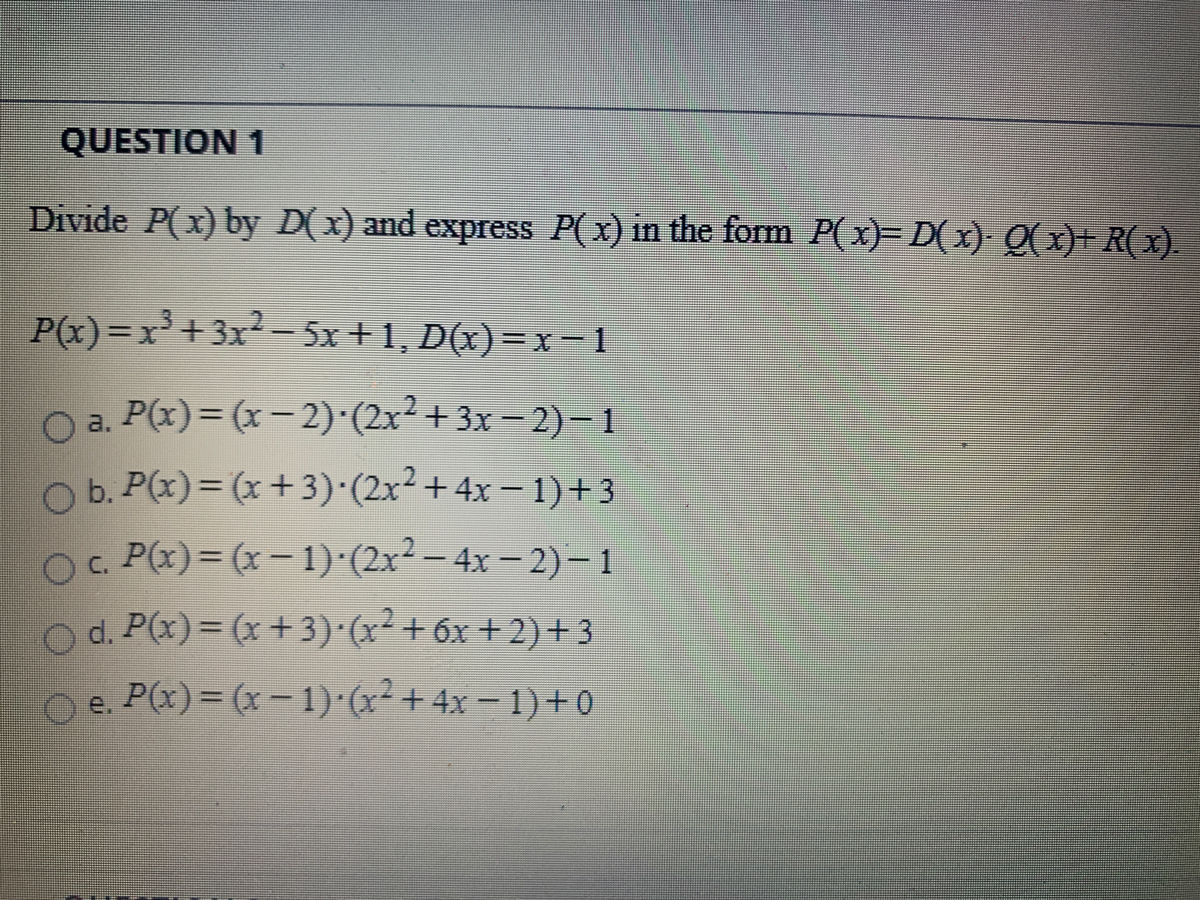


Answered Divide P X By D X And Express P X In Bartleby



If One Zero Of The Polynomial 3x 2 10x P Is 1 3 Then The Value Of P And Other Zero Respectively Is Brainly In



Solved Find P 1 If P X 4x 2 6x 11 Find P 1 3 I Chegg Com



Computed 2p 1 3 2 3x 1 3x 1 3d 1 X S P D Spectrum Of 48cd Download Scientific Diagram



Solved Chapter 1 1 Consider The Functions F X X 5x Chegg Com
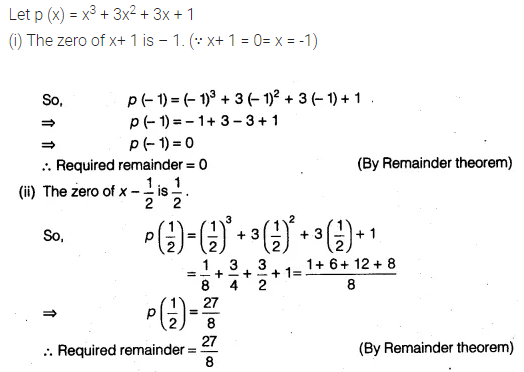


Find The Remainder When X3 3x2 3x 1 Is Divided By Cbse Class 9 Maths Learn Cbse Forum



Finding Inverse Functions Quadratic Example 2 Video Khan Academy


Cbse 9 Math Cbse Polynomials Ncert Solutions


Search Q Find The Remainder When X3 2b3x2 2b3x 2b1 Is Divided By X 2b1 Tbm Isch



Roots Factors
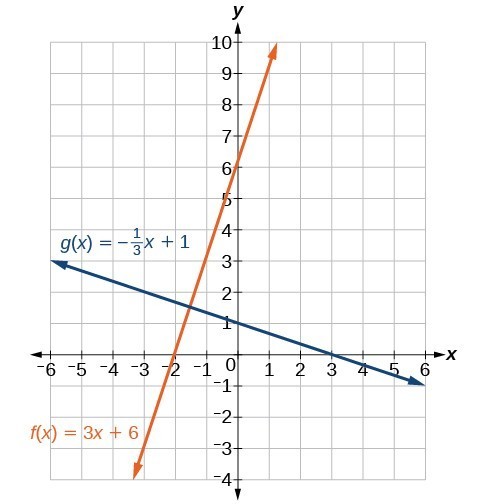


Write The Equation Of A Line Parallel Or Perpendicular To A Given Line College Algebra



Verify Whether The Following Are Zeroes Of The Polynomial Indicated Against Them Pleft X Right 3x 1 X Dfrac 1 3


Http Www Mayfieldschools Org Downloads 3 9 practice key2 Pdf



P X 3x 1 X 1 3 Verify Zeroes Of Polynomial Show Method Also Brainly In
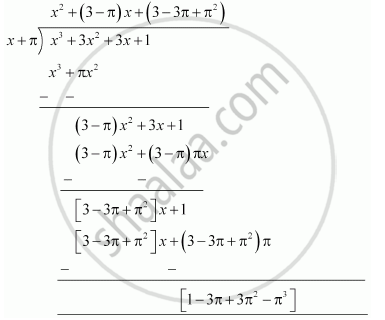


Find The Remainder When X 3 3x 2 3x 1 Is Divided By X P Mathematics Shaalaa Com



Int 2x 3 3x 2 4x 5 2x 1 Dx Equls To A X 3 2 X
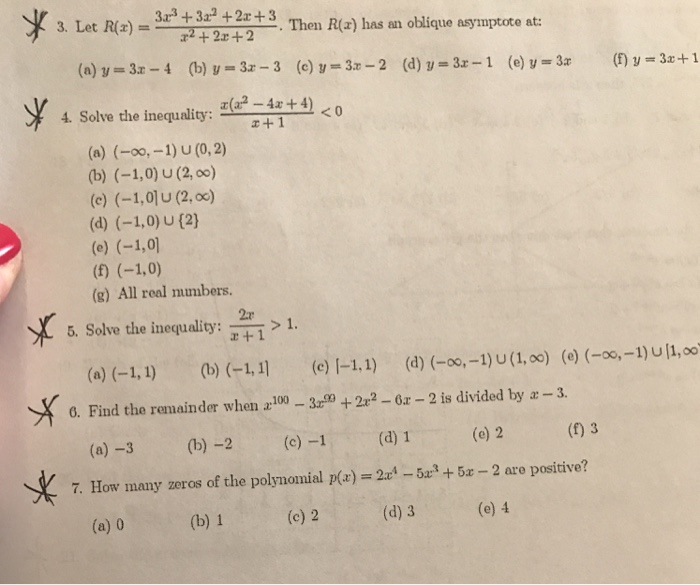


Solved Let R X 3x 3 3x 2 2x 3 X 2 2x 2 The Chegg Com



I Obtain All The Zeroes Of The Polynomial P X 3x4 15x3 17x2 5x 6 If Two Zeroes Are 1 3 And 1 3 Mathematics Topperlearning Com Cf90xyyy



3 Verify Whether The Following Are Zeroes Of The Polynomial Scholr



Verify That P X 3x 1 X 1 3 Math Polynomials Meritnation Com



If P X X 3 3x 2 2x Find P 0 P 1 P 2 What Do You Conclude



Ncert Solutions For Class 9 Maths Chapter 2 Polynomials Toppers Bulletin



Verify Whether P X 3x 1 X 1 3 2 3 Is The Zero Of The Polynomial Indicated Against It Brainly In


If P X X2 4x 3 Then Evaluate P 2 P 1 P 1 2 Studyrankersonline


Systems Of Linear Equations



Module 1 Polynomial Functions


Find The Values Of P And Q So That F X X2 3x P Ifx 1 Qx 2 Ifx 1 Is Differentiable At X 1 Studyrankersonline


Cbse 10 Math Ncert Solutions


2



Ncert Solutions For Class 9 Maths Chapter 2 Exercise 2 2 Polynomials



P X 3x 1 X 1 3 I P X 3x 1 X



Rd Sharma Solutions For Class 10 Chapter 8 Quadratic Equations Exercise 8 6 Avail Pdf



If The Sum Of Zeroes Of P X A 1 X 2 2a 3 X 3a 4 Is 1 Find Its Product



Ncert Class Ix Polynomials Exercise 2 Question No 3 Youtube


Zero Polynomial Example


Search Q Find The Zero Of The Polynomial In Each Of The Following Cases Tbm Isch



P X 3x 1 X 1 3 P X X



Polynomial 1 Class 9 Notes



Polynomial Long Division X 3 3x 2 5x 3 X 1 Youtube



What Is The Equation Of The Tangent To The Curve Y 3x 2 X 1 At Point 1 3 Quora
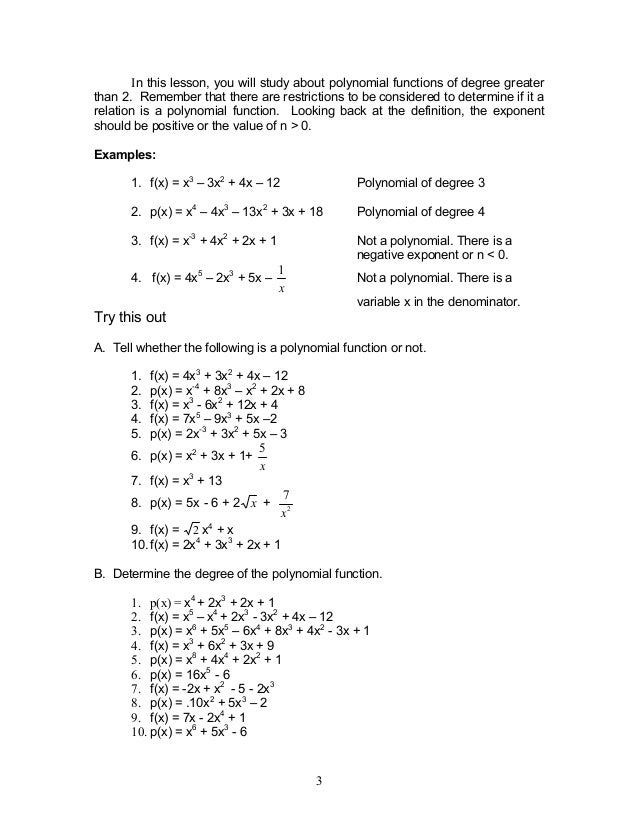


Module 1 Polynomial Functions



Example 7 Divide The Polynomial 3x4 4x3 3x 1 By X 1
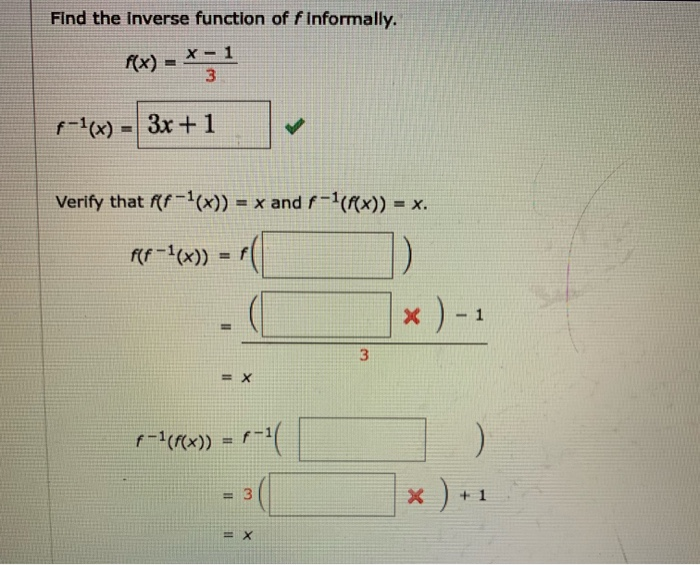


Solved Find The Inverse Function Of F Informally 3 F1 X Chegg Com



Ex 2 2 3 Verify Whether Following Are Zeroes Of The Ex 2 2



Class 9 Polynomial 2 Coordinate Geometry Linear Equation In Two Variables Euclid S Geometry Lines And Angles Notes


Cbse 9 Math Cbse Polynomials Ncert Solutions


2



P X 3x 1 X 1 3 I P X 3x 1


コメント
コメントを投稿